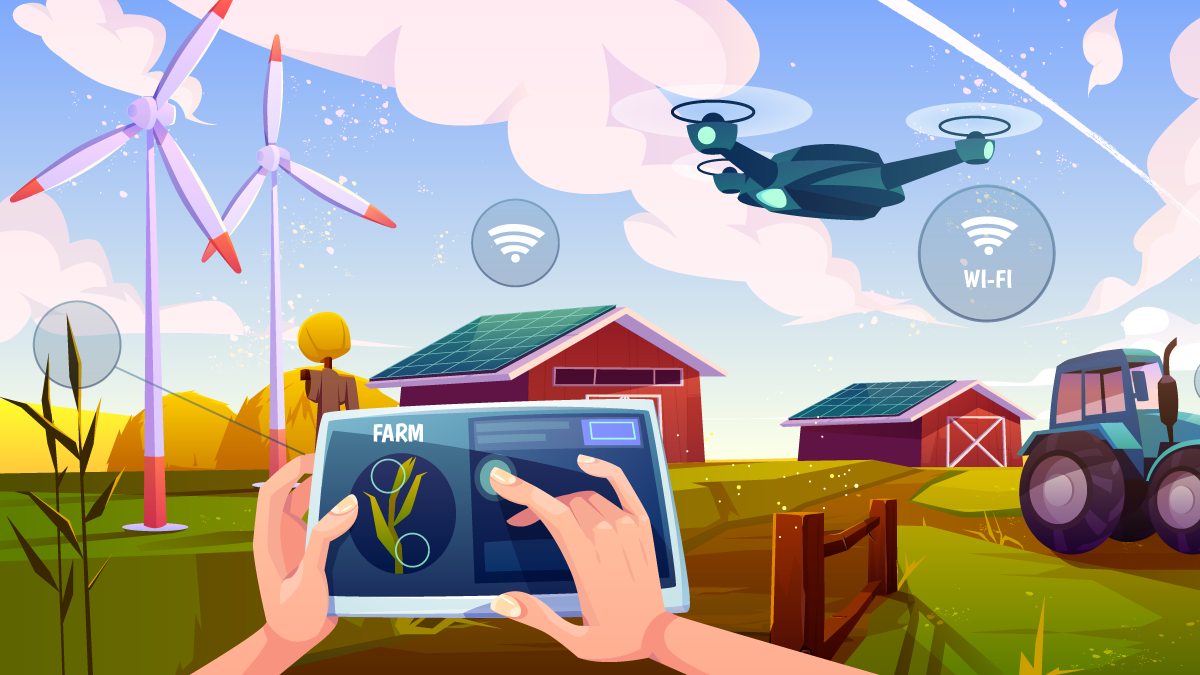
Farming is the foundation of human survival. And as the second and tertiary industries have stepped into the digital era, and Artificial Intelligence has reinvented various industries, agriculture has not kept pace with them. Over the next two decades, breakthrough technologies will metamorphose the productivity of farms all over the world.
Today, the farming innovations on our immediate horizon include autonomous pickers, robotic weed/pest killers, weed-killing lasers, IoT for farming, and other unprecedented technologies. While the usage of robots and drones isn’t likely to grow exponentially in the near future, IoT tools have a great potential for becoming a widespread technology tool any day now.
Farming in 2020: IoT Technology
Combining both future-facing innovations in hardware and software, interconnected digital devices have the capacity to track and assess everything which can minimize waste and save resources. The IoT reinvents the farm industry and empowers farmers to contend with their challenges.
IoT-enabled devices can gather data like cattle well-being, soil moisture, chemical application, and weather factors. Devices can mean anything from pump sheds and tractors to meteorological stations.
The information produced by IoT devices helps advance the yield of plants, allows specialists to track farm operations and performance, and adjust to farming conditions, thus reducing time and financial resources. Overall, IoT is all about backing up the farmer’s gut instinct with data-powered decisions.
3 IoT Technology Use Cases In Agriculture
Tech innovations and IoT offer an opportunity to change the game for the agro-industry. In particular, here are a few real-life examples that feature this approach in agriculture:
- Monitoring atmospheric conditions: Meteorological stations backed by sensors are the most in-demand smart tools. Using connected devices, scattered across the field, is an innovative approach for controlling the weather at a particular location and for making the data accessible around the world. They also monitor the parameters like temperature, dampness, pressure, and moisture. The obtained results can be used for better predictions of crop needs.
- Greenhouse automation: Traditional greenhouses need specific climatic factors to grow and preserve plants in there. Without an automatic control system, it is hard to maintain the specific weather patterns inside the hotbeds. Fueled by IoT, automatic monitoring and control of the greenhouse environment refers to the Greenhouse Automation System. It replaces the direct supervision of the human, thus minimizing manual efforts. The Internet of Things technology allows farmers to fetch accurate data on the hotbed conditions and change the weather characteristics fine-tuned with a specific set of parameters.
- IoT-enabled cattle management: Along with crop management, livestock monitoring implements IoT-integrated devices to control cattle well-being and detect illnesses. By taking the fortune-telling out of herd management, IoT sensors scan the location and vitals. In the long run, IoT sensors will help to improve the effectiveness of cattle production and ramp down physical labor and labor cost.
The Bottom Line
Cutting-edge technology plays an essential role in enhancing the value and volume of farming production. Among all innovations, IoT-enabled devices have the greatest potential for developing a data-driven approach, thus optimizing yields and boosting sustainability.




